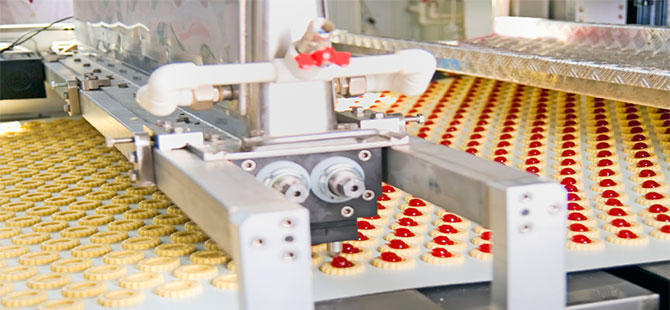Manufacturing Innovation Blog
Powered by the Manufacturing Extension Partnership

Going green is great for the environment, but implementing sustainability measures brings additional benefits. Some of these include increased profits, decreased costs of production and operation, and improved brand awareness and customer loyalty.
Food manufacturers can reduce their environmental footprint in many ways. Here are some of the best areas to target for sustainability measures, along with the lasting benefits of doing so.
Product sourcing
Consumer demand for healthy food and beverage products has shown steady growth throughout the past decade, and promises to continue its upward trajectory, according to USDA estimates. With increased public awareness and support of organic food production, many food brands are offering an increased selection of organic products in order to gain or retain market share. By using organic products, manufacturers can help reduce the amount of agricultural chemicals released into the environment, and protect soil and water resources.
Sustainable sourcing is another food product concern, especially for products of tropical origin like palm oil. Companies such as Unilever and Kellogg are responding to consumer concerns about rainforest deforestation by requiring that their suppliers follow sustainability guidelines.
Eliminating toxins from the manufacturing process
Another way manufacturers can address consumer demand for food purity is by eliminating toxic chemicals from the manufacturing process. This can include everything from cleaning agents to packaging materials, but also addresses equipment used in food handling. Flexible tubing is a good example. Various diameters of plastic tubing are often used in equipment that transfers or dispenses food items. Unfortunately, many tubing products contain a phthalate called DEHP, which is considered a chemical of concern by multiple environmental health organizations for its impact on human and environmental health. Replacing DEHP tubing with less toxic alternatives can help a company offer healthier products and earn greater trust and loyalty from consumers.
Packaging
In addition to using non-toxic materials in packaging, food manufacturers can help the environment by reducing the amount of packaging used, and switching to recycled and other eco-friendly packaging. Thinner packaging materials and/or smaller packages can save companies significant money, as can reducing the amount of waste during packaging. Peerless Coffee and Tea, a family-owned beverage company in Oakland, Calif., is saving 100,000 a year by switching to computerized packaging equipment that reduces the amount of wasted Mylar during production.
Energy efficiency
WhetherHVAC or electrical, the benefits of cutting energy costs are well known. While it’s easy to focus on high-profile energy saving initiatives such as Stonyfield Farm’s solar array, it’s important to remember that the low-hanging fruit in energy savings is often quite mundane and relatively easy to implement. Simply turning equipment off when not in use can save huge amounts of energy. Fixing leaks, air-sealing buildings, and switching to energy efficient lighting are also excellent ways to reduce energy use and save money. It’s also important for food manufacturers to be sure all electrical cables and wires are properly sized. Undersized wiring can overheat. This is not only a fire hazard, but can cost a significant amount in wasted electricity.
Refrigerants
Chloroflourocarbons (CFCs), a widely used refrigerant, were banned in the 1970s due to their destructive effect on the ozone layer. Unfortunately, the hydroflourocarbons (HFCs) often used to replace them are now proving just as bad. HFCs are “super greenhouse gases” with over 3,000 times more global warming potential (GWP) than carbon dioxide. Alternative, lower GWP refrigerants are available. HFC-free freezers often save energy, too. The ones Ben & Jerry’s recently deployed in the U.S. use 10 percent less energy than conventional equipment.
Recycling
At the consumer level, recycling is usually an act of goodwill. For food manufacturers, it can generate significant savings. American Licorice’s story is a great example. The Oregon candy company generated $48,000 in annual savings and revenue simply by implementing recycling programs for all its industrial waste, including scrap metal, cardboard, plastics and food waste.
Water use
The food industry is highly water-intensive, and manufacturers can save a lot of money by conserving and recycling water in food plants. The Equity Group, a chicken-nugget processing plant in North Carolina, was able to cut water use by 30 percent and save $100,000 annually by reviewing their water use and switching to less water-intensive procedures.
Transportation
Food manufacturers can also realize substantial savings by upgrading and managing their transportation fleets for optimal efficiency. In addition to fuel-saving fleet technology and improved routing, training drivers in efficiency best practices such as idle time reduction can be very effective.
Finally, food manufacturers can help the environment — and themselves — by raising awareness. Communicating your sustainability initiatives with consumers and stakeholders helps keep the environment top of mind and inspires others to do their part as well. At the same time, companies benefit from publicity and increased consumer trust and loyalty.
About the author
Related Posts
Comments
- Reply

